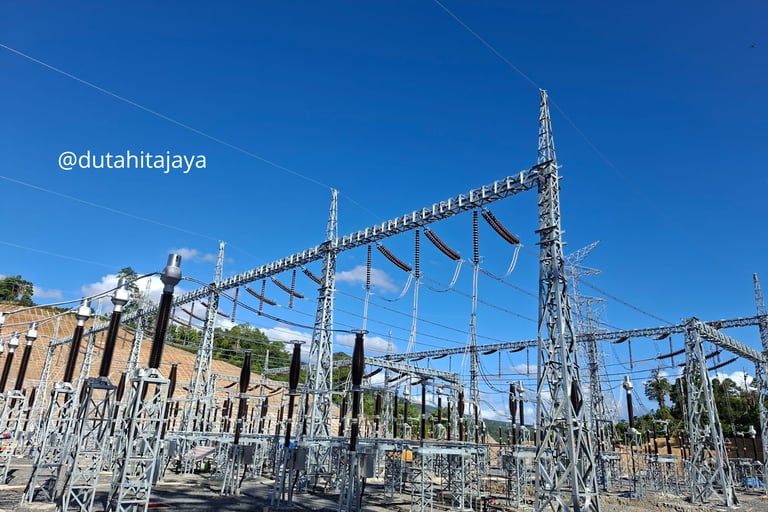GITET: The Beating Heart of Indonesia’s Power System Few People Notice
Substation
Have you ever seen a large facility surrounded by tall steel towers and high-voltage cables, usually located on the outskirts of a city? That’s not just any building — it’s likely a GITET, short for “Gardu Induk Tegangan Ekstra Tinggi”, or Extra High Voltage Substation. This facility is one of the most critical infrastructures in Indonesia’s national electricity system.
What Is GITET and How Does It Differ from a Regular Substation?
In general, a substation functions to receive, distribute, and convert electrical voltage from one level to another. However, GITET operates on a much larger scale.
While standard substations handle medium to high voltages (around 20 kV to 150 kV), GITET manages extra-high voltages — typically 500 kV or more. Such high voltages are essential for transmitting electricity efficiently over long distances, usually from major power plants such as coal (PLTU) or hydroelectric (PLTA) stations to large urban load centers.
Why Is GITET So Important?
Think of the electricity network as a transportation system — GITET is the main highway. Without it, power generated from large plants couldn’t be delivered efficiently to the areas that need it most, especially densely populated cities with high electricity demand.
GITET serves as a key link between transmission systems, for example connecting Sumatra to Java or Java to Bali. Without it, the transmission process would experience massive energy losses, resulting in wasted power and higher operational costs.
Read also: Steel Bridges – A Strong Solution for Modern Infrastructure
Key Components Inside GITET
For those curious, here are several major components that make up a GITET — they may sound technical, but they’re quite straightforward once you know their functions:
Extra-High Voltage Transformers – Convert extremely high voltage electricity into lower levels suitable for standard substations.
Busbars – Main connectors linking equipment within the substation.
Circuit Breakers – Automatically cut off electricity flow in the event of a fault.
Protection and Control Systems – Maintain network stability, safety, and allow remote monitoring.
Insulators and Lightning Arresters – Protect the system from surges and lightning strikes.
Is GITET Dangerous to the Public?
Although GITET facilities look intimidating with their massive structures and high voltages, they are designed with strict safety standards. The entire area is restricted to authorized personnel only, with proper grounding systems, safety clearances, and secure fencing to protect nearby communities.
That said, every GITET project requires careful planning — not only technically but also socially — as many are built close to residential or community areas.
GITET and Indonesia’s Energy Future
As Indonesia moves toward an energy transition and rising national electricity demand, the role of GITET becomes even more crucial. The government and PLN continue to expand GITET infrastructure across regions, including integration with renewable energy power plants.
GITET also plays a vital role in developing Smart Grid systems — the future of power distribution that is more efficient, flexible, and powered by real-time data.
Conclusion
Though often unnoticed by the public, GITET is a vital part of Indonesia’s electrical backbone. It ensures electricity flows smoothly and efficiently from power plants to homes, offices, factories, and businesses nationwide.
By understanding what GITET is and how it works, we gain a deeper appreciation for the complex yet organized electrical network that powers our daily lives — from turning on a light to charging your phone.


